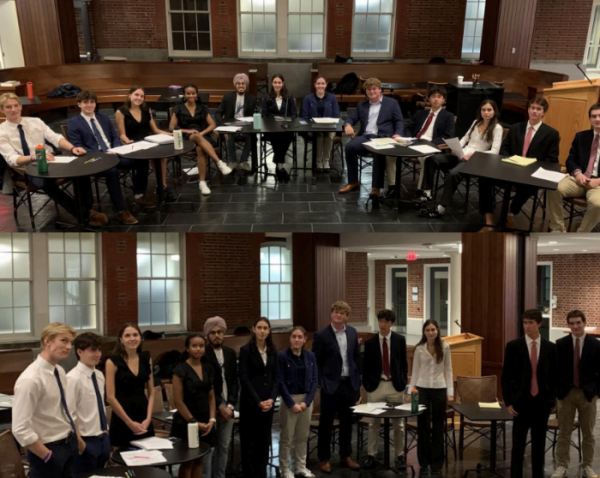Groton’s Steps Toward Sustainability, Revisited
In the third issue of this year, The Circle Voice ran an article on Groton’s sustainability, pointing to many of the strides the School has taken in pursuit of an eco-friendlier campus. While that article’s information was factual, the Circle still has a considerable way to go in reducing its environmental footprint. In order to become a leader among our peer schools when it comes to sustainability, student led-initiatives are currently pushing for installment of solar panels. This article hopes to add context to its previous incarnation to present a more balanced picture of Groton’s environmental impact.
Groton School relies on the Groton Electric Light Department (GELD) for energy, and while the company has recently added a local solar array to its energy generation methods, solar energy contributed to only 2.8% of its fuel mix in 2016 (the last year for which full data was available), according to Tammi Lemire, Business Manager of GELD. The percentage has increased somewhat throughout 2017, but is still small compared to the sustainable energy used at some of our peer schools who generate their own electricity.
According to Lawrenceville School’s website, for example, the school generates 90% of its energy needs with a nearly 30-acre solar farm. During the day, they can produce nearly twice the amount of energy needed by the School, and this excess is exported to the local electrical utility. St. Mark’s School’s website also states that the school uses solar energy to power 25% of the school’s total annual electricity consumption. Other schools in the Independent School League (ISL) have also implemented solar panel initiatives. Belmont Hill’s solar panel generates approximately 25,000 kilowatt hours of power per year for the Science Building, Milton Academy’s solar panel provides about 50 percent of the electricity for its Athletic Center, Roxbury Latin has installed a 137 kW solar photovoltaic (PV) renewable energy system on the roof of its Field House, according to the schools’ websites.
However, while a number of other schools have talked about and looked into solar initiatives, in many cases “they haven’t done much yet in the way of spending money to do anything,” according to Groton’s Chief Financial Officer Arthur Diaz. Groton is thus not the only school lacking a large-scale solar-panel installation, but we still lag behind leading [GF1] schools when it comes to sustainability.
To reduce Groton’s environmental footprint, the Groton Association for Environmental Awareness (GAEA) put together a student petition for solar panels, in order to show the trustees that the effort to make Groton a more environmentally friendly place does not only come from a small group of students. Sandra Redjali ‘19 said, “We hoped that after we showed them how much the students care about this issue, they would be more willing to give us a chance to make a full solar panel proposal at the spring trustee weekend.” With over 340 student signatures, Mr. Klein agreed to give the group a slot to present.
In the past, Groton’s administration and trustees have examined and rejected solar panel initiatives on several occasions. Mr. Diaz cited two main drivers for switching energy sources: to reduce the school’s carbon footprint and to reduce our costs. He said, “The administration and the school’s trustees have looked at installing solar several times and on each occasion decided not to, because there was not an overly convincing case in terms of either of those two measures.” Mr. Diaz added that GELD is the lowest cost energy supplier around –– nearby towns that receive electricity from National Grid pay rates 81% higher than the rates from Groton Electric. Furthermore, the school has made reductions in its carbon footprint, cutting its emissions by half from 2004 to 2016. Even though GELD’s energy does not completely come from solar or wind sources, the company has been switching its energy procurement to more renewable resources.
Currently, 45.1% of GELD’s energy comes from nuclear plants. While there is a general consensus that nuclear power is superior to fossil fuels in sustainability, there is another issue: one of New England’s two power plants is slated to close by 2019. (A third shuttered its doors in 2014.) Although these sources of GELD’s current nuclear energy are closing, Ms. Lemire said the company plans to increase the nuclear power portion of their fuel mix over the next couple of years.
Solar panels were described as only having incremental financial benefits in the previous article, but that perspective did not take into account certain financial incentives that will likely prove a solar array profitable in the long term. In 2016, Allie Banks ‘16 and Angus Warren ’16 outlined a proposal for a solar array to be placed on some of Groton’s currently unused land. After extensively researching and calculating initial costs, energy usage, annual savings of solar panels, and through discussions with solar installers, they stated that a conservative estimate time for Groton’s payback period would be eight years, even accounting for Groton’s inability to take advantage of solar renewable energy credits (SRECs).
Furthermore, the previous article mentioned that solar panels will become hazardous waste when they cease producing power, but did not report that the amount of waste generated by solar panels is tiny compared to waste generated by oil refining and fracking for natural gas, according to environmental science teacher David Black. Nor, he added, solar waste as hazardous as radioactive waste from nuclear power.
Dr. Black is a strong advocate for sustainability. “We can never do enough,” he said, “and we shouldn’t be satisfied by relying on GELD when we have such huge resources.” While Groton is currently able to meet its energy needs, implementing solar panels would be a large step toward sustainability.










